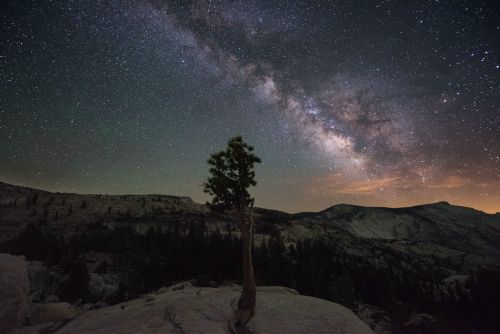Js

js
More Posts from Tracyjackman-blog and Others

Centaurus A : What’s the closest active galaxy to planet Earth? That would be Centaurus A, only 11 million light-years distant. Spanning over 60,000 light-years, the peculiar elliptical galaxy is also known as NGC 5128. Forged in a collision of two otherwise normal galaxies, Centaurus A’s fantastic jumble of young blue star clusters, pinkish star forming regions, and imposing dark dust lanes are seen here in remarkable detail. The colorful galaxy portrait is a composite of image data from space- and ground-based telescopes large and small. Near the galaxy’s center, left over cosmic debris is steadily being consumed by a central black hole with a billion times the mass of the Sun. As in other active galaxies, that process generates the radio, X-ray, and gamma-ray energy radiated by Centaurus A. via NASA
js

X-Ray Image of the Tycho Supernova
js

September Total Lunar Eclipse Sequence
js

IC 1871: Inside the Soul Nebula : This cosmic close-up looks deep inside the Soul Nebula. The dark and brooding dust clouds outlined by bright ridges of glowing gas are cataloged as IC 1871. About 25 light-years across, the telescopic field of view spans only a small part of the much larger Heart and Soul nebulae. At an estimated distance of 6,500 light-years the star-forming complex lies within the Perseus spiral arm of the Milky Way, seen in planet Earth’s skies toward the constellation Cassiopeia. An example of triggered star formation, the dense star-forming clouds of IC 1871 are themselves sculpted by the intense winds and radiation of the region’s massive young stars. This color image adopts a palette made popular in Hubble images of star-forming regions. via NASA
js

Earth and moon interconnected with starfield.
js
-
 vinhotintoseco liked this · 8 months ago
vinhotintoseco liked this · 8 months ago -
 head-full-of-wishes reblogged this · 8 months ago
head-full-of-wishes reblogged this · 8 months ago -
 brasscasket liked this · 3 years ago
brasscasket liked this · 3 years ago -
 theartistintheambulance reblogged this · 6 years ago
theartistintheambulance reblogged this · 6 years ago -
 grace-of-creation-archive liked this · 6 years ago
grace-of-creation-archive liked this · 6 years ago -
 verminviscount liked this · 6 years ago
verminviscount liked this · 6 years ago -
 rideronthepailhorse liked this · 6 years ago
rideronthepailhorse liked this · 6 years ago -
 gamersquirrel liked this · 6 years ago
gamersquirrel liked this · 6 years ago -
 lovelessinbrooklyn reblogged this · 6 years ago
lovelessinbrooklyn reblogged this · 6 years ago -
 lovelessinmanhattan liked this · 6 years ago
lovelessinmanhattan liked this · 6 years ago -
 grim-2026 liked this · 6 years ago
grim-2026 liked this · 6 years ago -
 ajc18615425 liked this · 6 years ago
ajc18615425 liked this · 6 years ago -
 we-can-work-it-0ut liked this · 6 years ago
we-can-work-it-0ut liked this · 6 years ago -
 thepizzalovingnerd liked this · 6 years ago
thepizzalovingnerd liked this · 6 years ago -
 daemondamian liked this · 6 years ago
daemondamian liked this · 6 years ago -
 indelliblemercinary liked this · 6 years ago
indelliblemercinary liked this · 6 years ago -
 indelliblemercinary reblogged this · 6 years ago
indelliblemercinary reblogged this · 6 years ago -
 metalzoic liked this · 6 years ago
metalzoic liked this · 6 years ago -
 kindnessandstudying liked this · 6 years ago
kindnessandstudying liked this · 6 years ago -
 amandathescarlet-reblog reblogged this · 6 years ago
amandathescarlet-reblog reblogged this · 6 years ago -
 amandathescarlet liked this · 6 years ago
amandathescarlet liked this · 6 years ago -
 tyyiyi liked this · 6 years ago
tyyiyi liked this · 6 years ago -
 smallfryingpan liked this · 6 years ago
smallfryingpan liked this · 6 years ago -
 galactic-monarch liked this · 6 years ago
galactic-monarch liked this · 6 years ago -
 juliswam liked this · 6 years ago
juliswam liked this · 6 years ago -
 cripple-cat liked this · 6 years ago
cripple-cat liked this · 6 years ago -
 zihinbenddd reblogged this · 6 years ago
zihinbenddd reblogged this · 6 years ago -
 16fahri liked this · 6 years ago
16fahri liked this · 6 years ago -
 eastern-wind liked this · 6 years ago
eastern-wind liked this · 6 years ago -
 yourawkwardbean liked this · 6 years ago
yourawkwardbean liked this · 6 years ago -
 jacesilvermoon liked this · 6 years ago
jacesilvermoon liked this · 6 years ago -
 schifnimrod liked this · 6 years ago
schifnimrod liked this · 6 years ago -
 arkang3lsworld liked this · 6 years ago
arkang3lsworld liked this · 6 years ago -
 schweppessoda-blog liked this · 6 years ago
schweppessoda-blog liked this · 6 years ago -
 that-one-feel liked this · 6 years ago
that-one-feel liked this · 6 years ago -
 cruz-world liked this · 6 years ago
cruz-world liked this · 6 years ago -
 fagdykefrank liked this · 6 years ago
fagdykefrank liked this · 6 years ago -
 atilla4434sblog liked this · 6 years ago
atilla4434sblog liked this · 6 years ago